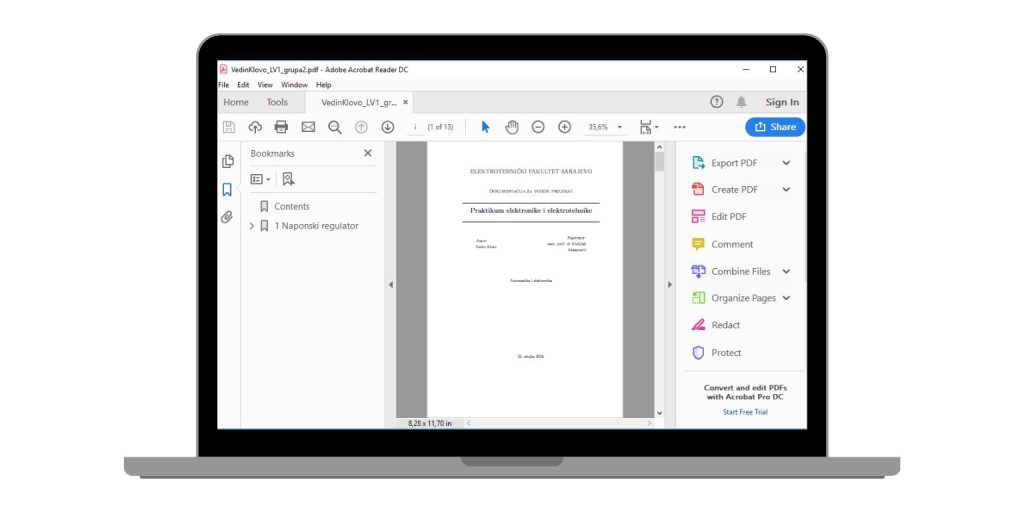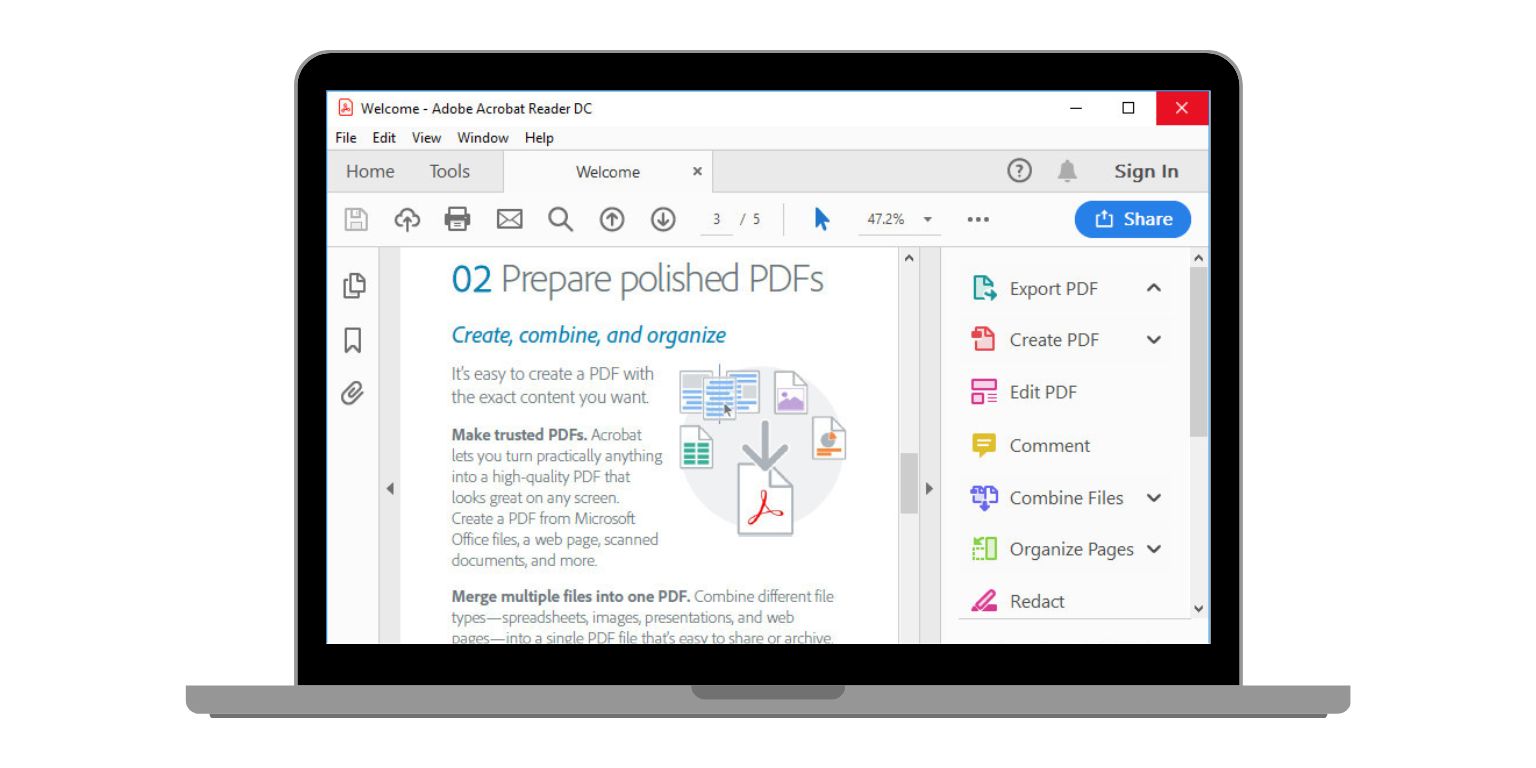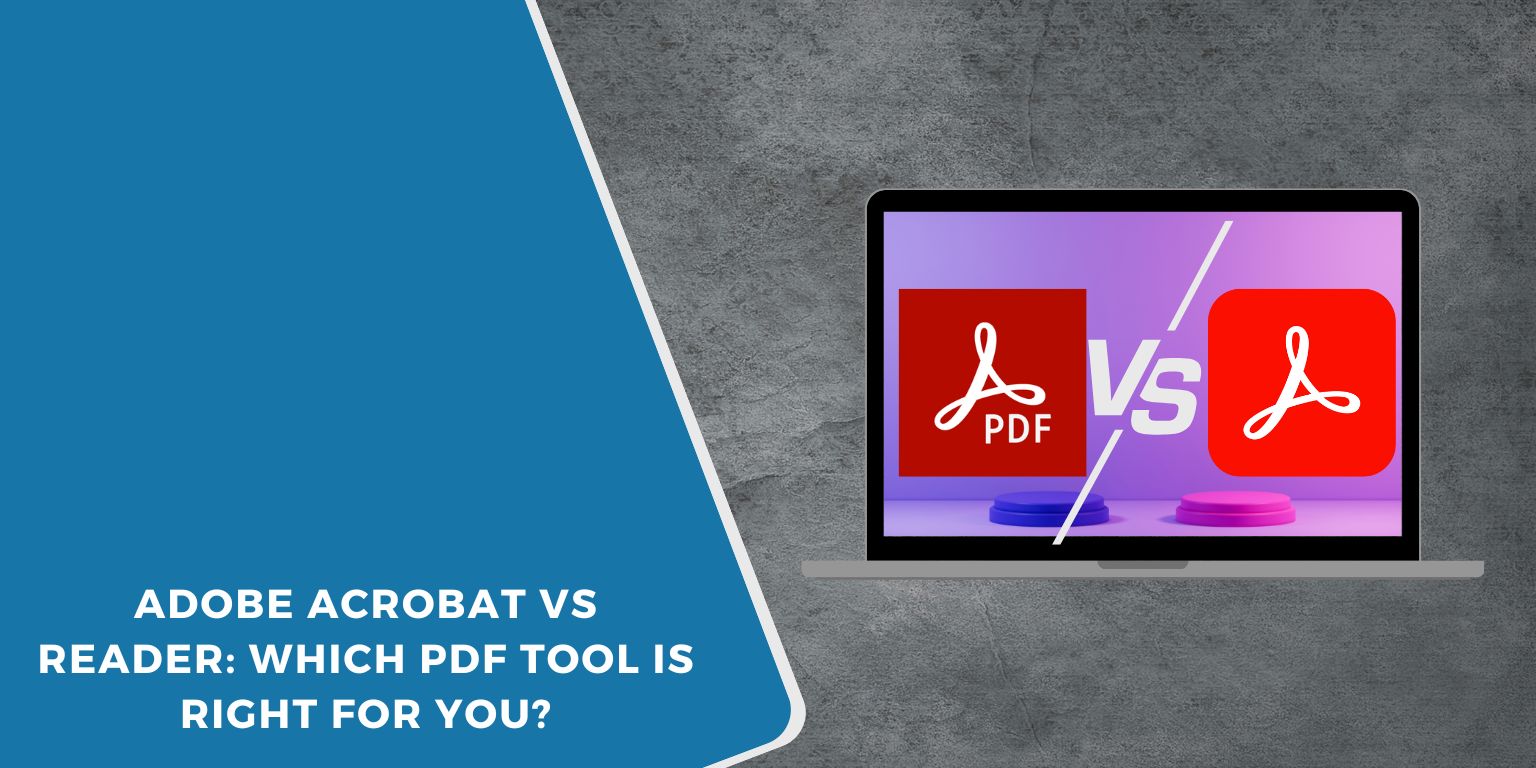Many people use PDFs every day, but not everyone knows the difference between Adobe Reader and Adobe Acrobat. Both tools are made by Adobe and help with PDF files, yet they serve very different purposes.
This guide will help you understand what each tool does, what features they offer, and which one is better for your needs. Whether you’re reading documents or managing professional files, the right tool can save time and money.
What Is Adobe Reader?
 Adobe Reader is Adobe’s free tool for viewing PDF documents. It’s made for people who only need to open, read, and print PDFs.
Adobe Reader is Adobe’s free tool for viewing PDF documents. It’s made for people who only need to open, read, and print PDFs.
You can also highlight text, add simple comments, and fill in forms with basic fields. It’s available on Windows, macOS, iOS, and Android.
Main features:
- Open and view any PDF file
- Highlight and comment on text
- Fill out basic PDF forms
- Print or share documents
Adobe Reader works well for students, casual users, or anyone who just needs to read and review PDF content without making changes.
What Is Adobe Acrobat?
 Adobe Acrobat is a full-featured PDF editor built for more advanced tasks. It includes everything Adobe Reader can do, plus tools to create, edit, sign, and secure documents.
Adobe Acrobat is a full-featured PDF editor built for more advanced tasks. It includes everything Adobe Reader can do, plus tools to create, edit, sign, and secure documents.
Acrobat comes in two versions: Acrobat Standard and Acrobat Pro. Pro includes more powerful tools like OCR (text recognition) and PDF comparison.
Advanced features in Acrobat:
- Edit text and images inside PDF files
- Merge or split multiple PDFs
- Add digital signatures and form fields
- Scan and convert paper to editable PDFs
- Lock files with passwords and permissions
- Compare documents and track changes
Acrobat is ideal for businesses, teachers, lawyers, and teams who work with PDFs every day and need to keep documents organized and secure. You can also use .net pdf viewer for seamless document display to manage and review files more efficiently across devices. This flexibility helps maintain workflow consistency whether working remotely or in an office.
Key Differences Between Adobe Reader and Acrobat
Here’s a direct comparison of features and differences:
| Feature | Adobe Reader | Adobe Acrobat |
|---|---|---|
| Open/View PDFs | Yes | Yes |
| Edit Text | No | Yes |
| Fill Forms | Basic Only | Advanced Forms |
| Sign Documents | Basic | Advanced Sign |
| Merge/Split Files | No | Yes |
| OCR Scanning | No | Yes |
| Add Passwords | No | Yes |
| Price | Free | Paid Subscription |
Use Cases: When to Use Each
 Use Adobe Reader if:
Use Adobe Reader if:
- You just need to view or print PDFs
- You want a free tool to highlight and comment on text
- You occasionally fill out simple forms
Use Adobe Acrobat if:
- You regularly edit or convert PDF files
- You need to add e-signatures or create fillable forms
- You work with scanned files or need OCR tools
- You manage secure or sensitive documents
Choosing the right tool depends on how often and how deeply you work with PDF files.
Pros and Cons of Each
Adobe Reader:
- ✅ Free to use
- ✅ Easy to install and lightweight
- ❌ No editing tools
- ❌ Not suitable for professional document tasks
Adobe Acrobat:
- ✅ Full editing and signing features
- ✅ Best for teams and professionals
- ❌ Requires a monthly or yearly subscription
- ❌ May be too advanced for basic needs
Which One Should You Choose?
If your work only involves reading PDFs, Adobe Reader is the better and simpler choice. You won’t need to pay for anything, and you’ll still be able to highlight, print, and fill out forms.
If your work includes editing, converting, or securing PDF files, Adobe Acrobat is the right choice. It’s built for professionals and supports more complex document workflows.
Pick based on what you do most often—not just what looks good at the moment. Paying for Acrobat makes sense if you’ll use its tools weekly or daily.
Final Thoughts
Both Adobe Reader and Adobe Acrobat are powerful tools in their own way. Reader is perfect for everyday users who need a simple way to open and read PDFs. Acrobat is designed for power users who need advanced features like editing, scanning, or securing documents.
Don’t pay for more than you need, but also don’t limit yourself with a free tool if your work demands more.
Still unsure? Comment with what you need to do, and we’ll help you choose.
If this helped, share it with others who might be deciding between Adobe Reader and Acrobat.


